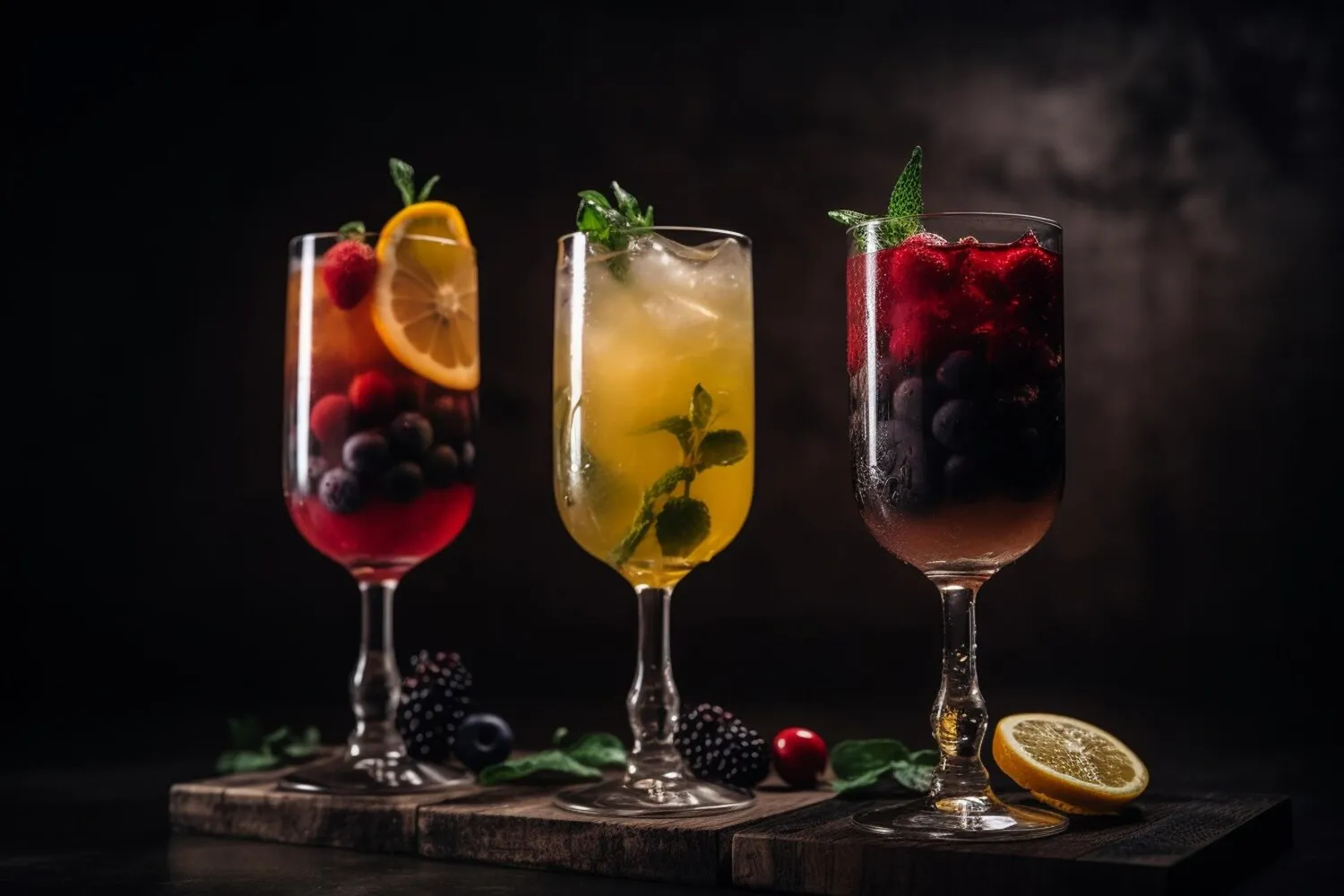
Cocktails
Pachamama is well-known for its creative cocktail menu with Latin American influences. These often include tropical fruits, unique liquors, and innovative presentations.
Nutrition Facts
* The % Daily Value (DV) tells you how much a nutrient in a serving of food contributes to a daily diet. 2,000 calories a day is used for general nutrition advice.
Pachamama
No Similar Dishes Found
We couldn't find any similar dishes at the moment. Try exploring other restaurants!
Latin American cocktails are deeply rooted in the region's history, blending indigenous ingredients with influences from European colonization and global trade. Pre-Columbian cultures crafted fermented beverages from corn, fruits, and cacao. European colonization introduced spirits like rum, brandy, and wine, which were then incorporated into local drinks. The transatlantic slave trade brought sugar cane and further shaped cocktail traditions. Modern Latin American mixology embraces these influences, celebrating both traditional recipes and innovative techniques.
Cocktails in Latin America are more than just drinks; they are integral to social gatherings, celebrations, and expressions of national identity. Each country boasts its own signature drinks and cocktail traditions, reflecting local ingredients and cultural preferences.
Social Rituals
Cocktail hour, or 'hora feliz,' is a common practice in many Latin American countries, providing a relaxed setting for friends and family to connect and unwind after a long day.
National Pride
Specific cocktails, like the Pisco Sour in Peru and Chile or the Caipirinha in Brazil, are considered national drinks and are deeply intertwined with national identity and cultural heritage.
Regional Variations
Each region within Latin America offers unique cocktail variations, reflecting the availability of local ingredients and distinct culinary traditions. For example, the use of different types of agave in Mexican cocktails leads to a wide range of flavor profiles.
Latin American-inspired cocktails are characterized by vibrant and complex flavors, often balancing sweetness, acidity, and spice. Tropical fruits play a central role, alongside unique liquors and fresh herbs.
Common flavor profiles include sweet (from fruits like mango, pineapple, passionfruit), tart (from citrus like lime, grapefruit), spicy (from chili peppers, ginger), and herbal (from mint, cilantro, yerba mate). Key ingredients often feature rum, tequila, pisco, cachaça, and mezcal. The use of fresh juices, homemade syrups, and bitters adds depth and complexity to the cocktails.
Use Fresh, High-Quality Ingredients
Opt for fresh, ripe fruits, freshly squeezed juices, and high-quality spirits to ensure the best flavor and aroma in your cocktails. Avoid using artificial flavors or pre-made mixes.
Balance Sweetness and Acidity
Achieving a balanced cocktail requires careful attention to the ratio of sweet and tart elements. Adjust the sweetness or acidity as needed to create a harmonious flavor profile.
Experiment with Local and Seasonal Ingredients
Incorporate seasonal fruits and herbs that are native to Latin America, such as passionfruit, guava, mango, and yerba mate, to add unique and authentic flavors to your cocktails.
Pay Attention to Presentation
Latin American cocktails are often visually appealing, with vibrant colors and creative garnishes. Use edible flowers, fresh fruit slices, and colorful straws to enhance the presentation.
Explore additional Mixology dishes and restaurants
Explore MixologyDiscover top dining spots and culinary experiences in Paris.
Explore ParisLearn more about the food culture, restaurant scene, and culinary heritage of France.
Explore France